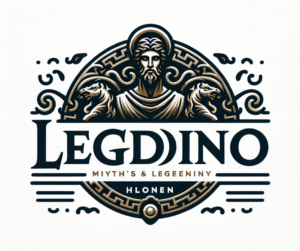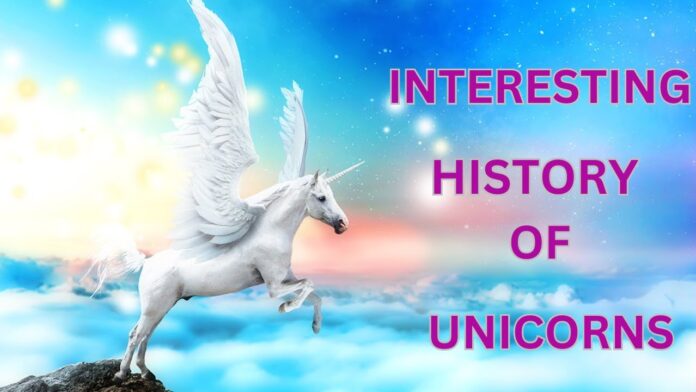
Unicorns, mythical creatures symbolizing purity, grace, and magic, have fascinated humanity for millennia. From ancient myths to modern-day popular culture, unicorns continue to captivate the imagination of people across the globe. Though often thought of as creatures of fantasy, unicorns have deep roots in ancient civilizations, where they symbolized power, mystery, and the unattainable.
In this article, we will explore the origins of unicorn myths, how different cultures viewed these legendary beings, and how the symbolism of the unicorn continues to influence modern-day thought and culture. By understanding the tales of unicorns and their significance throughout history, we can gain a richer perspective on why these creatures still resonate with us today.
The Ancient Origins of Unicorn Myths
The earliest recorded mention of a unicorn-like creature dates back to ancient Mesopotamia and the Indus Valley Civilization. In both regions, the single-horned animal was depicted in art and literature, symbolizing strength, purity, and spiritual awakening. However, it wasn’t until the Greek and Roman periods that the concept of the unicorn started to resemble the creature we know today.
Unicorns in Greek and Roman Culture
One of the most significant early references to unicorns can be found in the works of Greek physician Ctesias, who wrote about a horse-like creature with a single horn on its forehead. He described the unicorn as a swift and powerful animal, difficult to capture, and possessing magical healing properties. Though his accounts were likely based on exaggerated tales from travelers to distant lands, his writings were widely accepted and helped cement the unicorn’s place in Western mythology.
Roman naturalist Pliny the Elder also wrote extensively about unicorns in his Natural History. Like Ctesias, Pliny believed that unicorns were real creatures, describing them as fierce and untamable beasts. Over time, unicorns came to represent both strength and purity in Roman culture, leading to their association with nobility and the divine.
Unicorns in Medieval European Myths
Unicorns gained even more prominence during the Middle Ages in Europe. They were often depicted in Christian art and literature, where they became symbols of Christ’s purity and sacrifice. Medieval European myths portrayed unicorns as gentle and beautiful creatures that could only be tamed by a virgin maiden. This imagery reflected the Christian ideals of chastity and purity, with the unicorn representing both the purity of Christ and the soul’s quest for spiritual salvation.
In medieval bestiaries, unicorns were described as elusive creatures that could only be captured through trickery, often by luring them into a trap with a virgin’s help. These stories were rich in symbolism, reflecting not only religious ideals but also societal views on femininity and sexuality.
The Symbolism of the Unicorn in Ancient and Modern Times
While the specific tales of unicorns may have varied across different cultures, certain symbolic themes remained consistent. Unicorns have always been associated with purity, innocence, and the idea of something rare or unattainable. In ancient times, this symbolism was often linked to spiritual enlightenment and divine favor.
Purity and Innocence
In many unicorn myths, the creature’s purity and innocence are central to its symbolism. For example, in Christian mythology, the unicorn’s association with virginity and its willingness to approach only pure maidens are metaphors for Christ’s purity and sacrifice. This connection to innocence has carried over into modern times, where unicorns are often seen as symbols of childlike wonder and imagination.
Strength and Power
Despite their association with purity, unicorns were also viewed as powerful creatures in many ancient cultures. In Greek and Roman myths, they were seen as swift and fierce, capable of defending themselves against predators. This dual symbolism—combining strength with purity—made unicorns complex and compelling figures, embodying the idea that true strength comes from maintaining innocence and integrity in a harsh world.
Rarity and the Unattainable
Throughout history, unicorns have been portrayed as elusive, mysterious creatures that are difficult—if not impossible—to capture. This made them symbols of the unattainable, representing ideals or goals that are beyond human reach. In medieval Europe, unicorns became emblematic of the spiritual journey, with the quest to capture a unicorn paralleling the soul’s search for God and eternal truth.
In modern times, the unicorn’s rarity and mystique have contributed to its enduring popularity. Whether in literature, art, or even as a marketing tool, unicorns are often used to represent something unique and desirable, yet elusive.
The Evolution of Unicorn Symbolism in Popular Culture
Unicorns have experienced a resurgence in recent decades, becoming symbols of fantasy, freedom, and individuality in popular culture. From their appearances in children’s books and films to their role as icons of the LGBTQ+ community, unicorns have come to embody a wide range of meanings in the modern world.
Unicorns in Children’s Literature and Media
In children’s literature and media, unicorns are often portrayed as friendly, magical creatures that inspire awe and wonder. They are frequently depicted as symbols of hope and imagination, teaching young readers about the importance of kindness, bravery, and belief in the impossible.
For example, in J.K. Rowling’s Harry Potter series, unicorns are portrayed as pure and magical creatures whose blood can grant life, but at a great moral cost. This aligns with the unicorn’s ancient associations with both purity and the idea of a rare, mystical power.
The Unicorn as a Symbol of Individuality
In recent years, unicorns have also become symbols of individuality and self-expression, especially within the LGBTQ+ community. The phrase “Be a unicorn in a field of horses” has gained popularity, encouraging people to embrace their uniqueness and stand out from the crowd. This modern interpretation of the unicorn builds on its historical association with rarity and the unattainable, transforming it into a symbol of personal empowerment and authenticity.
The Commercialization of Unicorns
In the world of marketing and consumer culture, unicorns have been embraced as trendy, whimsical symbols that appeal to people’s desire for novelty and fantasy. From unicorn-themed food and clothing to “unicorn startups” (companies valued at over $1 billion), the unicorn has become a symbol of success and extravagance.
While some may view this commercialization as a dilution of the unicorn’s historical significance, it can also be seen as a continuation of the creature’s longstanding association with rarity and the extraordinary. Whether in ancient myths or modern marketing, unicorns have always represented something special and otherworldly.
Conclusion: Why Unicorns Continue to Inspire Us
Unicorns have evolved from ancient symbols of purity, power, and spiritual awakening to modern icons of imagination, individuality, and success. Their enduring appeal lies in their ability to embody the complex interplay of innocence and strength, mystery and wonder. Whether in the pages of medieval bestiaries or today’s pop culture, unicorns remind us that some things—like purity, magic, and the unattainable—will always captivate the human heart.



















